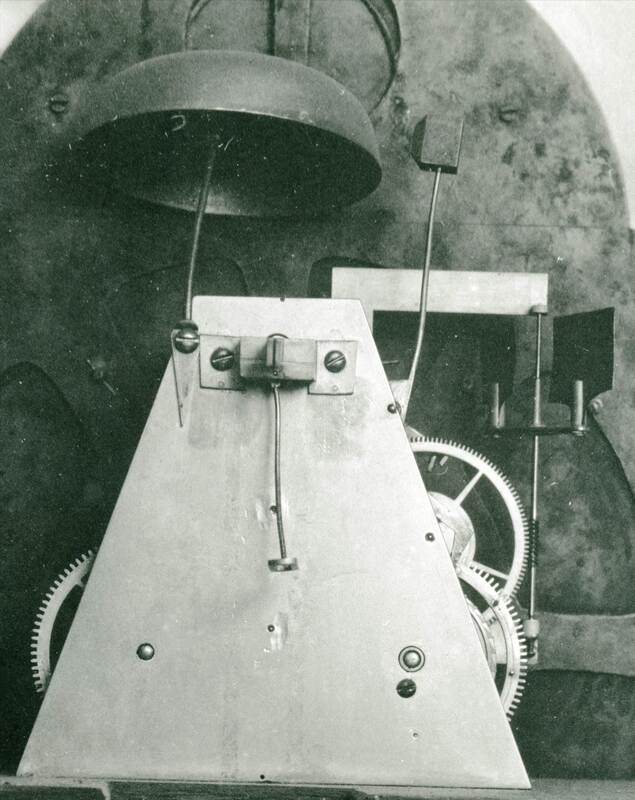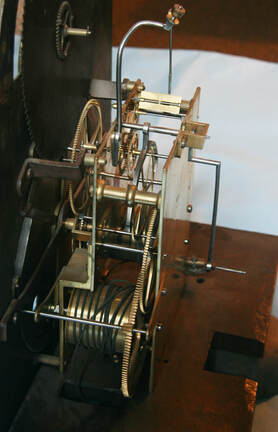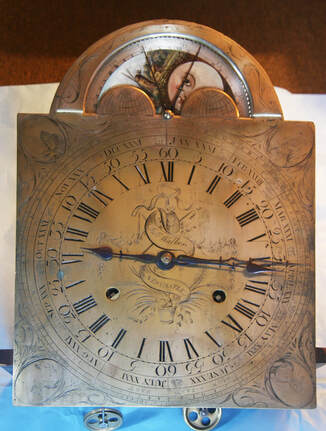|
John Walker was the son of James, a deceased gardener of Shoreditch, London. He was apprenticed to Charles Thompson on 6th June 1734 but not freed in the BC until 1749 and bound his first apprentice in 1751. The competition for a clockmaker in London must have been very strong at that time because John chose to move to Newcastle about 1752 -53. He was definitely in the town by 1754 when he advertised his presence in the Newcastle Journal from 15th June 1754 as follows :- “John Walker, clock and watch maker from London at the Crown and Dial in the Close, Newcastle-upon-Tyne, Makes, Mends and Sells, all sorts of Clocks and watches at reasonable rates; viz Chime Clocks with either Weights or Springs, keeping such regular time that no defect can be observed by the most Curious; Likewise Spring or Weight Quarter Clocks to strike the Hours and Quarters going upon 9 or 13 bells, with changes (and when pull’d) will repeat the last Hour and Quarters even to a second of time, if required. Also repeating Spring Clocks to strike the Hours at the due Time and their Hours and Quarters upon 7,9 or 13 bells (when pull’d). Also Silent Spring Clocks (only when pull’d) will strike the Hour and repeat, with the Cylinder Motion. Also makes and sells Weight 8 day Clocks to repeat the Hour, with the Sun’s Motion and the Increase and Decrease of days, with the Moon’s motion, and Time of High Water and the perpetual Month; Makes Regulators for Clock and Watchmakers with the Compound Pendulum; with several other mechanical Motions, performed in the newest methods not here mentioned.” This advertisement demonstrates the wide range of clocks and watches John Walker could supply to his customers. It is not surprising that he soon had a very successful business in an up-market part of the town. John married Jane Elliot in 1756 and John junior was born in 1763.
John Walker must have made a number of these new movements and supplied them to other clockmakers because I found one in a longcase clock by John Johnson of Morpeth (see fig. 1) which had a vertical fly for the striking train, as well as the three wheeled trains in triangular plates. John also made a year duration longcase clock about 1770 the movement having only four wheeled trains in order to reduce the amount of friction in the trains. The multi-functional dial of this extraordinary clock (fig.2a & b) on a single piece of brass had been engraved in the workshop of the famous engraver Ralph Beilby whose business records have survived and are kept at the Laign Art Gallery in Newcastle.
Ralph Beilby had set up his engraving business at the Head of the Side, Newcastle in 1765 after the leading engraver in the town, Thomas Jameson had been imprisoned for forgery. In 1767 Ralph Beilby and his brother William (the famous glass painter) were both looking for an apprentice. Thomas Bewick, who was known by the family, was given the choice of brothers he would like to work for, and he chose Ralph. Bewick later, in his memoir, described his master, Ralph Beilby as one of the finest silver engravers in the country. Thomas Bewick was made a partner of the business in 1777 and the company became the Beilby and Bewick engravers.
0 Comments
Leave a Reply. |
AuthorKeith Bates is an amateur horologist who has been researching clocks, watches and chronometers and their makers for over 30 years. Archives
August 2023
Categories
All
|




 RSS Feed
RSS Feed